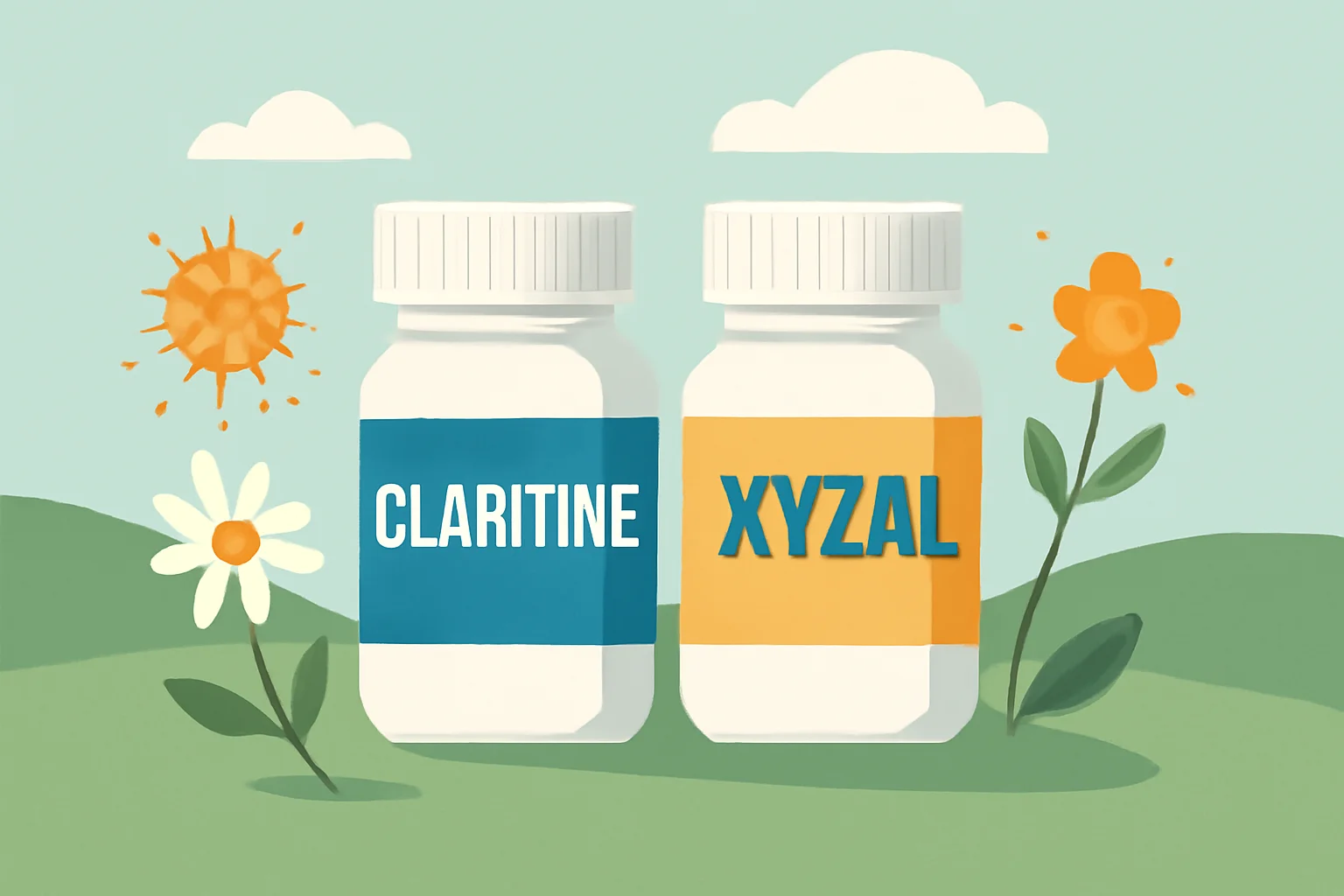
Claritine or Xyzal: Which is the better choice for allergies?
With the arrival of spring, many people experience allergic reactions that can cause various unpleasant symptoms, such as a runny nose, sneezing, itchy eyes, and skin rashes. There are several medications available to alleviate allergic symptoms, among which Claritine and Xyzal are the most well-known. These medications are antihistamines that help reduce the body’s allergic responses. Understanding how antihistamines work is essential for making the most appropriate choice among treatment options.
When treating allergic reactions, many face the question of which medication to choose. Claritine and Xyzal have fundamentally different active ingredients, and while both effectively relieve allergic symptoms, they offer different advantages and disadvantages. To make the right decision, it is important to understand how these medications work, what side effects they may have, and in which cases one may be preferable over the other. In the following sections, we will take a closer look at the properties, mechanisms of action, and uses of Claritine and Xyzal.
Claritine: Mechanism of Action and Use
Claritine, whose active ingredient is loratadine, is a second-generation antihistamine. The mechanism of action of this medication is based on blocking histamine H1 receptors, thereby reducing the symptoms of allergic reactions. Antihistamines generally serve to decrease the response to the release of histamine, so Claritine also helps alleviate symptoms caused by allergic rhinitis and hives.
The effects of Claritine are usually felt quickly, within 1-2 hours, and symptom relief can last for up to 24 hours. This long duration of action is especially beneficial for those who need continuous protection against allergens, such as during pollen season. One advantage of taking this medication is that it does not cause drowsiness, as loratadine does not easily cross the blood-brain barrier, allowing daily activities to continue uninterrupted while taking Claritine.
Claritine is used not only for allergic rhinitis but also for the treatment of chronic hives. However, it is important to take the medication according to the recommended dosage and to be aware of potential side effects, which may include headache, fatigue, or dry mouth. Claritine is generally safe to use, but in certain cases, such as during pregnancy or breastfeeding, it is advisable to seek medical advice.
Xyzal: Mechanism of Action and Use
Xyzal, whose active ingredient is levocetirizine, is also a second-generation antihistamine. Levocetirizine is the enantiomer of cetirizine, developed for more effective treatment of allergic reactions. The medication also works by blocking histamine H1 receptors, but levocetirizine exerts a stronger effect on the receptors compared to cetirizine, effectively reducing allergic symptoms.
The effects of Xyzal generally appear quickly, and symptom relief can also last for up to 24 hours. This long duration of action allows for once-daily dosing, which is a convenient solution for many. However, one must also pay attention to side effects while taking this medication, which may include drowsiness, dizziness, or dry mouth. The risk of fatigue with Xyzal is somewhat higher than with Claritine, so caution is advised when taking this medication, especially if driving or operating machinery.
Xyzal can be used to treat allergic rhinitis, chronic hives, and other allergic reactions. The advantage of this medication is its rapid and effective symptom relief, but due to side effects, it may not be the ideal choice for everyone. As with any medication, it is important to seek medical advice before taking Xyzal, especially if other medications are being taken or if there are cardiovascular issues.
Claritine vs. Xyzal: Which is the Right Choice?
When choosing between Claritine and Xyzal, several factors should be considered. One of the most important considerations is the symptoms being experienced. If the main issues are a runny nose, sneezing, and itchy eyes, both medications can provide effective solutions. However, if the risk of fatigue or drowsiness is a concern, Claritine may be the better choice, as it is less likely to impact daily activities.
Another important consideration is the side effects. As mentioned, the risk of drowsiness is higher with Xyzal, so if someone is sensitive to this, it may be wise to opt for Claritine. Conversely, if someone has previously tolerated cetirizine well, then Xyzal may also be a suitable choice.
Establishing a treatment plan involves consulting a healthcare professional, especially if other medications are being taken or if there are chronic health conditions. A doctor can help select the most appropriate medication, taking into account individual needs and lifestyle.
Finally, it is important to note that the effectiveness of Claritine and Xyzal can vary from person to person. What one individual tolerates well may not be suitable for another. Therefore, trying out the medications and following medical advice is crucial for making the right choice.
This article does not constitute medical advice. In case of health issues, everyone should follow their doctor’s recommendations.

